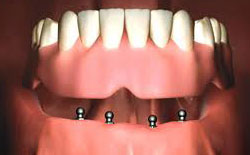
Figure 1
Overdenture is a removable partial denture or complete denture that covers and rest on one or more remaining natural teeth, the roots of natural teeth, and/or dental implant.
When teeth were extracted, the residual alveolar bone resorbed and continued to resorb, which left very little support for complete dentures and made wearing them difficult. Therefore, if teeth or roots could be maintained in the alveolar bone, there would be significant benefit to the patient.
Overdenture is indicated in patients with few remaining retainable teeth in an arch. It is also preferred in patients with malrelated ridge cases; patients needing single denture; patients with unfavorable tongue positions, muscle attachments, and high palatal vault, which render the stability and retention of the prosthesis difficult.
Overdentures are contraindicated in patients with questionable oral prophylaxis, systemic complications, and inadequate inter-arch distance.
Advantages of overdentures include preservation of alveolar bone and proprioception, and also enhanced stability and retention of the denture. Overdenture can be easily converted to complete denture over a period of time. The most important advantage is that the patient has the psychological benefit of having his own teeth because they do not feel they are edentulous and increase the manipulative skills in handling the denture.
Sequence of treatment
For tooth supported overdenture, root canal therapy is necessary for retained roots or teeth. Canine and premolars are the best choice of abutments because of their location. (Figure 2)
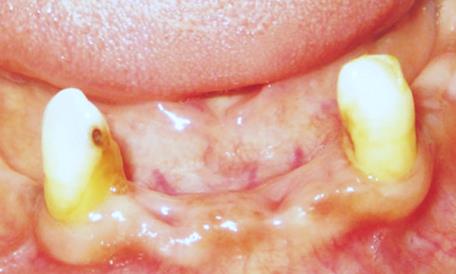
Figure 2
Portion of teeth above the gingival margin will be removed. (Figure 3)
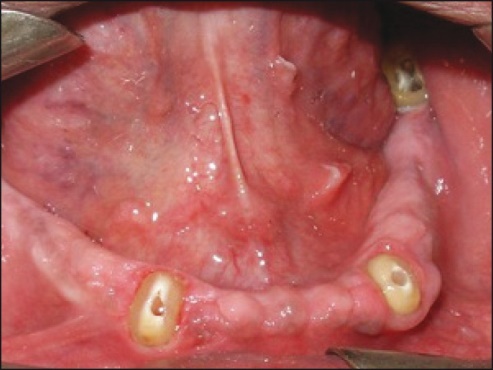
Figure 3
The remaining tooth, projecting above the gingiva, can be rounded and covered with composite or amalgam filling (Figure4), or cast metal coping (Figure 5). The crown is contoured to a convex or dome shape.
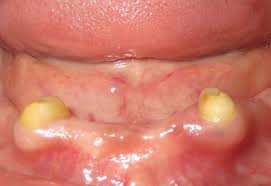 |
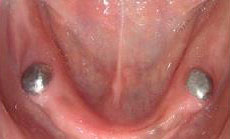 |
|
Figure 4
|
Figure 5
|
The retained roots can also support retentive elements (Figure 6 & Figure 7). The retentive elements can provide some additional benefits like retention and support.
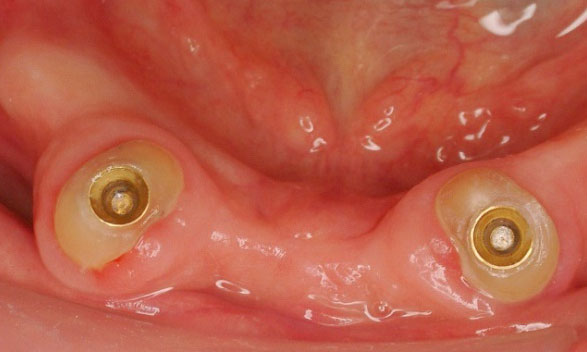 |
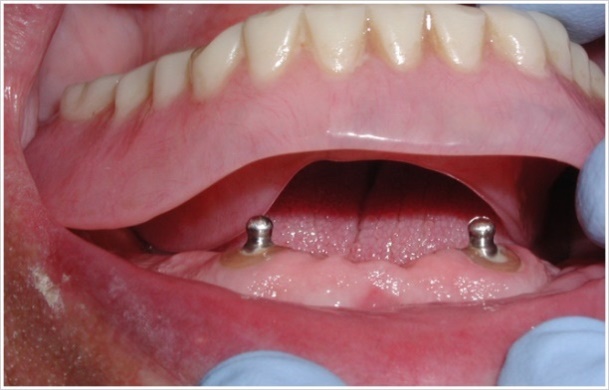 |
|
Figure 6
|
Figure 7
|
Implant-supported overdentures may use a variety type of attachments to improve the retention and support of the denture ( Figure 8, Figure 9, Figure 10 & Figure 11)
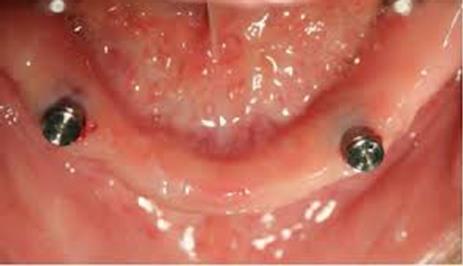 |
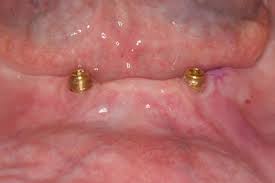 |
|
Figure 8
|
Figure 9
|
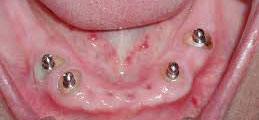 |
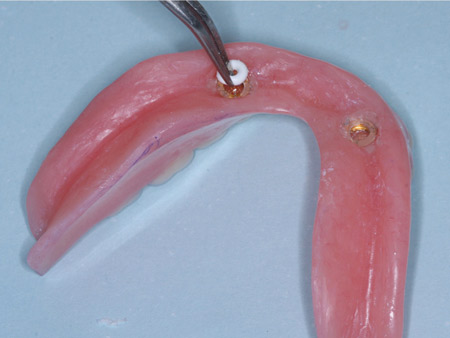 |
|
Figure 10
|
Figure 11
|
Disadvantages of overdenture include that meticulous oral hygiene is pertinent in order to prevent caries and periodontal disease. Caries has been identified as a continuing problem for patients wearing overdentures. One reason may be that plaque accumulation under the overdenture results in bacterial colonization and requires significant effort by the overdenture wearer to prevent it. The protocol for subjects who wear overdentures is to remove the denture when sleeping, rinse the mouth, and clean the dentures after every meal. Also, the patient should brush their teeth with a fluoride toothpaste at least twice a day.
The flange of overdenture tends to be bulkier and thin especially at the area of retained root which may affect the aesthetic and strength. This treatment modality is an expensive approach with frequent recall check-ups of the patient than a conventional removable complete denture.
References
- Ettinger RL. Do Root Supported Overdentures Have a Good Prognosis in General Dental Practice? Oral Health Journal, 2014.
- Miller P.A. Complete Dentures Supported by Natural Teeth. J Prosthet Dent 1958;8:924-8.
- Tooth supported overdenture: A concept overshadowed but not yet forgotten! Rupandeep Kaur Samra1, Shreenivas Vasant Bhide2, Chhavi Goyal3, Taranjit Kaur4 Year : 2015 | Volume : 7 | Issue : 1 | Page : 16-21
- Sadowsky SJ. The implant-supported prosthesis for the edentulous arch: design considerations. J Prosthet Dent. 1997;78:28-33.
| Last Reviewed | : | 28 August 2020 |
| Writer | : | Dr. Isma Liza bt. Ali |
| Accreditor | : | Dr. Fauziah bt. Ahmad |
| Reviewer | : | Dr. Roshima bt. Mohd Sharif |







